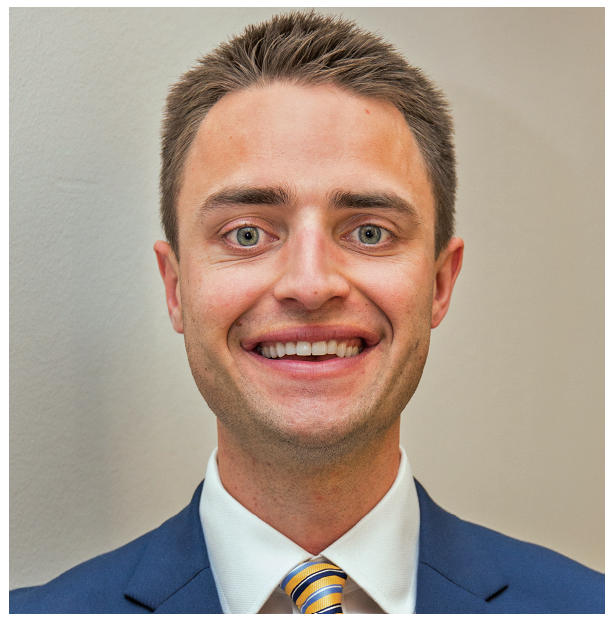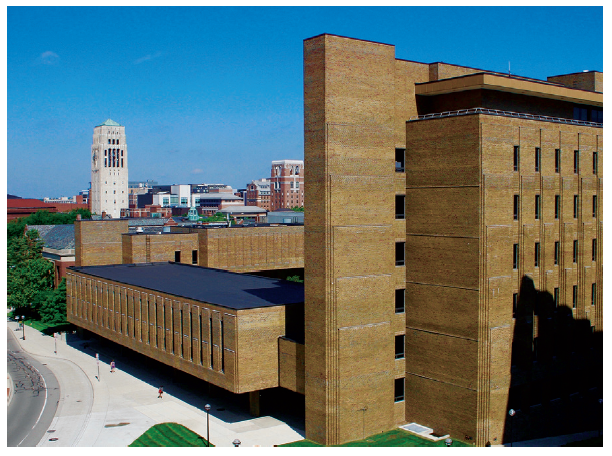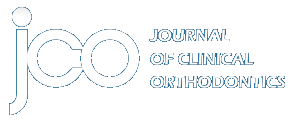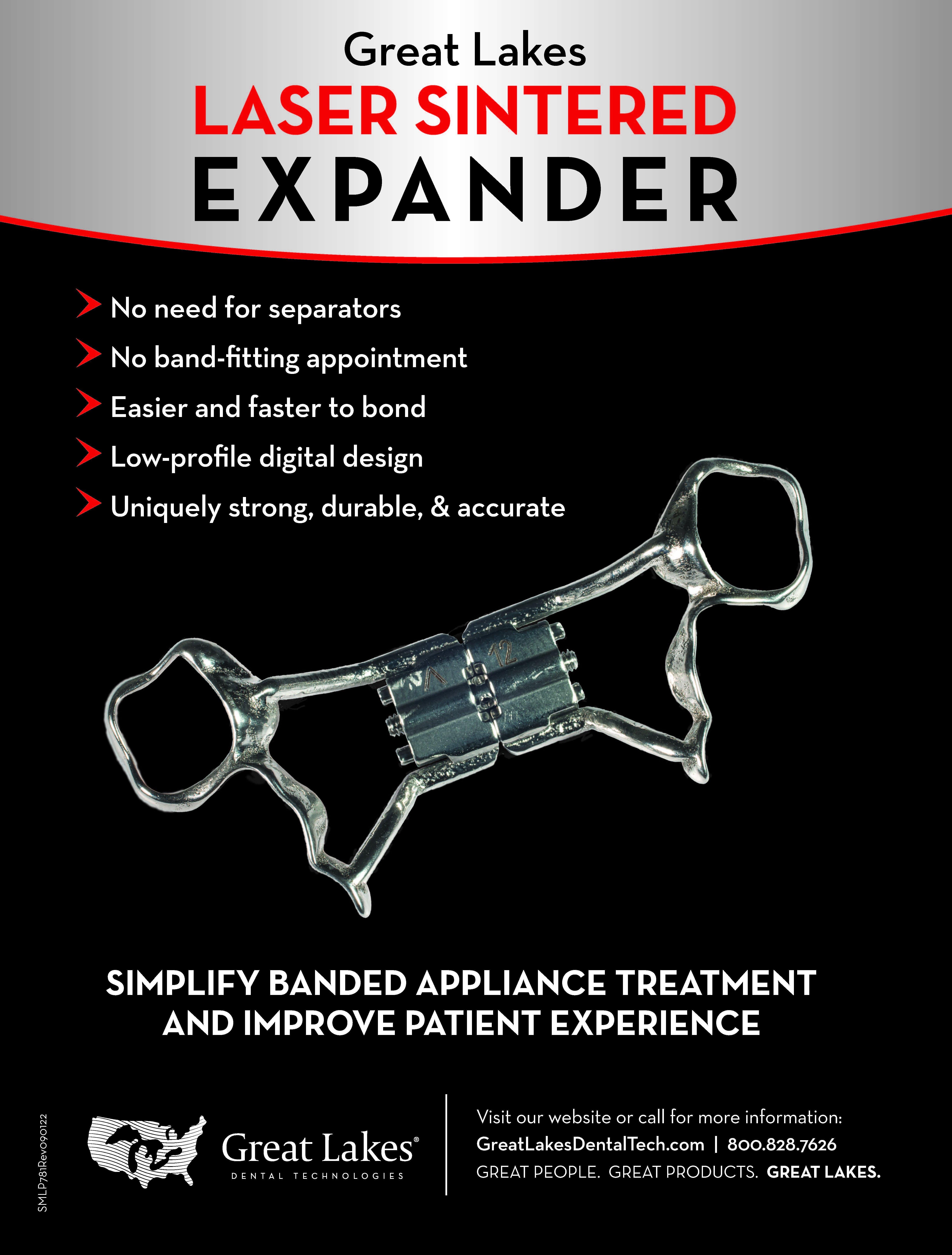2025 Eugene L. Gottlieb JCO Student of the Year: Dr. Korey Searle
The Journal of Clinical Orthodontics is pleased to name Dr. Korey Searle from the University of Michigan School of Dentistry as the winner of the 2025 Eugene L. Gottlieb JCO Student of the Year Award, presented by American Orthodontics. Dr. Searle was selected over 16 other students from schools around the United States and Canada in a two-stage, months-long competition judged by members of the JCO editorial board. His prize includes more than $8,000 worth of materials and travel from American Orthodontics, JCO, and Dolphin.
Dr. Searle is the tenth Student of the Year award winner, joining Dr. Grace Huang of the Harvard School of Dental Medicine (2024), Dr. Bianca Lau of the University of the Pacific (2023), Dr. Shelby Steffenhagen of the University of Texas Health San Antonio (2022), Dr. Amanda Gross of Texas A&M University (2021), Dr. Saro Atam of Stony Brook University (2020), Dr. Katya Skillestad of Texas A&M University (2019), Dr. Samaneh Mojarrad of the University of Pennsylvania (2018), Dr. Moataz Elmahdy of the University of Rochester (2017), and Dr. Krystian Jarosz of Rutgers University (2016). Nine schools have thus been recognized to date.
Any U.S. or Canadian orthodontic department was eligible to nominate one current student by submitting two letters of recommendation and the student’s personal essay. Each student was then given the materials from an unpublished case and asked to write a complete treatment plan, including all possible alternatives, within two weeks. Three JCO editorial board members narrowed the initial group of 17 nominees down to 12 finalists in December. In the second stage, each of the finalists submitted an ABO-style case report. The judging panel included Dr. John Graham of Salt Lake City; Dr. Neal Kravitz of South Riding, Virginia; Dr. Michael Meru of Thousand Oaks, California; Dr. Sarah Shoaf of Winston-Salem, North Carolina; Dr. Peter Sinclair of Los Angeles; and Dr. Kelton Stewart of Indianapolis.
As in past years, the judges were highly impressed by the quality of submissions. JCO is publishing Dr. Searle’s case report online to accompany this issue. All finalists will be featured on our Facebook page in the coming months.
Congratulations to Dr. Searle and the University of Michigan School of Dentistry! Current orthodontic students and faculty can expect the start of the 2026 nomination process in August.
PHILIP B. VOGELS
President, JCO, Inc.
Q&A with Dr. Korey Searle
Can you tell us a little about yourself?
I was born and raised in Grand Haven, Michigan, a small beach town along the shores of Lake Michigan. Growing up there gave me a deep appreciation for community and the outdoors. In my free time, I love staying active. You’ll often find me biking, running, traveling, or playing tennis and golf. I am also a big Michigan football fan and enjoy cheering on the Wolverines whenever I can.
Although I am an only child, I was never short on family. My mom is one of nine siblings, so I spent most of my childhood surrounded by aunts, uncles, and cousins. Now, my own family is growing. My wife and I are expecting our first child later this year, which is incredibly exciting. Family has always been a central part of my life. It keeps me grounded and reminds me of what truly matters.
Why are you pursuing a career in orthodontics?
My journey into orthodontics began in middle school when I underwent treatment for a Class II malocclusion with significant overjet. While I wasn’t exactly thrilled about the idea of premolar extractions at the time, the results were life-changing. This sparked my curiosity about the profession, which eventually led me to shadow my orthodontist. I quickly realized how much I loved the blend of science, physics, hands-on work, and patient care. I also knew early on that one day I wanted to own a practice and be a meaningful part of a local community, just like my orthodontist had been in ours.
Can you describe the path that led you to the University of Michigan?
I’ve been fortunate to call the University of Michigan home for nearly a decade, first for undergrad, then dental school, and finally orthodontic residency. I fell in love with Ann Arbor early on and appreciated being close to family and friends. When the time came to choose a residency, staying at Michigan was an easy decision. The program’s diverse clinical training and emphasis on evidence-based care aligned perfectly with my goals. Plus, I knew that I wanted to practice in Michigan long term. My residency provided a great way to build relationships with future colleagues and become part of the local professional community.

Dr. Korey Searle

University of Michigan School of Dentistry (photo courtesy of University of Michigan School of Dentistry).
What has surprised you the most during your orthodontic education?
I’ve been most surprised by the artistic side of orthodontics and the many effective ways to approach the same case. You can give multiple orthodontists the same patient, and each may develop a different—yet equally successful—treatment plan. Unlike general dentistry, which can often feel more black and white, orthodontics involves nuance, creativity, and complex decision-making that draws on both skill and experience.
I’ve also been surprised by how much the profession extends beyond tooth movement. We act as the conductors of treatment, balancing biomechanics, staff management, patient guidance, and real-time problem-solving. It’s a complex and dynamic profession that requires an ability to constantly adapt, and I’ve come to appreciate that more deeply over the course of my residency.
What has been the most difficult part of becoming an orthodontist?
Without a doubt, the amount of schooling has been the most difficult part. From grade school to residency, becoming an orthodontist requires nearly two decades of exams, lectures, and clinical training. That said, the challenge has also been rewarding. Each phase of the journey has helped shape me into who I am today. I’ve learned the importance of resilience, discipline, and a commitment to constant improvement. I will carry those lessons with me well beyond residency.
What has been your most rewarding orthodontic experience so far?
One of my most memorable cases involved treating an 80-year-old patient who had wanted braces her entire life but never had the chance due to prioritizing her children’s and grandchildren’s needs. She had a complex medical history that included oral cancer and limited mobility, which made even basic tasks like brushing or wearing elastics challenging.
Despite these obstacles, she showed up to every appointment with enthusiasm. She even color-coordinated her O-rings to match the theme of her 80th birthday party. On debond day, she was extremely grateful and cried tears of joy. Seeing her emotion and heartfelt gratitude was something I will never forget. It reinforced how meaningful our work can be and the role we play in transforming not just smiles, but also our patients’ lives.
Please briefly describe your most difficult residency case.
One of my toughest cases involved a teenage patient with amelogenesis imperfecta who traveled six hours just to be seen at our clinic. He had minimal enamel, severe crowding, and significant wear. Since his long-term plan included full-mouth crowns, improving alignment and spacing was critical to preserving his dentition. We started with clear aligners, but due to compliance issues and the extent of tooth movement needed, we switched to fixed appliances. Traditional brackets weren’t an option, so I ended up banding every tooth. This case pushed me to problem-solve and adapt at every step. It was time-consuming and technically challenging, but watching his progress was incredibly rewarding.
Any research projects you’d like to briefly share with our readers?
My master’s thesis focused on the impact of remote monitoring in orthodontics. I explored how practices are implementing this technology and how it affects treatment outcomes, including appointment frequency, treatment duration, number of aligners, and number of emergency appointments. The field is moving toward more digital and AI-assisted workflows, and I’m excited to be part of that evolution. I hope to have my findings published soon!
What are your postgraduate plans?
After graduation, I am planning to return to West Michigan. I’m excited to move back home and put down roots in a close-knit rural community. I look forward to building lasting relationships with patients and giving back to the place that played such a big role in shaping who I am today.
What do you think orthodontics will look like in 10 years?
I think orthodontics will be even more personalized and technology driven. In-office three-dimensional printing of aligners and custom brackets will likely become mainstream, and digital workflows like indirect bonding with in-house trays will be widely adopted. AI will play a bigger role too, in everything from remote monitoring to smarter practice management. While I don’t expect the biology of tooth movement to change anytime soon, our tools will keep evolving to improve precision, reduce treatment times, and enhance the overall patient experience.
Rapid-Fire Round
How can orthodontists thrive in today’s competitive marketplace, particularly with the increase in dentists offering various forms of orthodontics?
Our advanced specialty training prepares us to handle any case, no matter how complex. That level of expertise allows us to deliver efficient, high-quality care that’s hard for general dentists to match.
Social media: Should it be a major tool in an orthodontist’s marketing arsenal?
Social media should be a key part of every orthodontist’s marketing strategy, especially as patients become increasingly digitally connected. It’s a powerful way to engage with the community and showcase a practice’s culture.
Clear aligners: What malocclusions should they be considered or not considered for?
Clear aligners are great for mild to moderate crowding, Class I malocclusions, and controlled movements like tipping and mild spacing. I enjoy using them whenever I can, and they continue to improve, but it’s still tough to beat the efficiency and proven success of braces for more complex cases.
TADs: Are we moving toward too much TAD usage, or will applications continue to increase?
TADs offer great skeletal anchorage, but they’re not needed in most cases given their high failure rates and challenges with patient acceptance. Nevertheless, I’m sure orthodontists will keep finding creative ways to use them in their treatment plans.
Extraction: Where do you stand on the debate?
While I try to be conservative whenever possible, extractions are required in many cases to achieve ideal treatment outcomes. When necessary, I don’t hesitate to offer them, especially since I had extractions myself!
Retention: Should patients always be pushed toward permanent retention, and how long should we continue to see them on recall visits?
No, I don’t think permanent retention makes sense for everyone. I reserve bonded retainers for cases with high risk of relapse, such as significant spacing or rotations, especially since I’ve seen the downsides myself, including breakage and hygiene issues. Recall visits are most important in the first year or two, and after that, I tailor them to the patient’s needs.
Phase I treatment: Overused, underused, or properly used?
I think Phase I tends to be overused, and I try to avoid having patients in treatment for many years across multiple phases. That said, I fully support early intervention when it’s truly needed, like for crossbites, psychosocial concerns, ectopic teeth, habit reduction, space maintenance, or growth modification.
3D printing: Are we going to reach a point where orthodontic practices must have this capability in-house?
Yes, given this rapidly evolving technology, I believe in-house 3D printing will become standard practice, especially as printed aligners and brackets continue to improve.
Anything else you’d like to add?
I’d like to thank JCO and American Orthodontics for this honor, and my mentors at Michigan, my co-residents, and especially my wife, Anna, and our family for their unwavering support. This award is particularly meaningful to me because my late mother, who passed in 2020, would be incredibly proud of this achievement.



COMMENTS
.